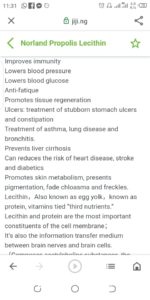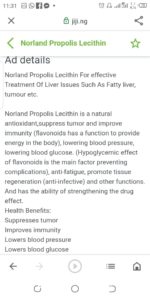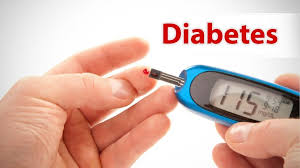SAY GOODBYE TO DIABETES AND BLOOD SUGAR
Written by darling on February 14, 2020
Deaths in 2017: 83,564
Percentage of total deaths: 3%
Diabetes is a condition wherein the body can no longer control blood glucose, which leads to dangerously high levels of blood glucose. This is called hyperglycemia.
Persistent hyperglycemia can damage the body’s tissues, including those in the nerves, blood vessels, and eyes.
The body converts most of the food people eat into glucose, a simple sugar, which it can then use for energy. The pancreas, an organ near the stomach, makes a hormone called insulin to move glucose from the bloodstream into the cells.
There are two main types of diabetes: type 1 diabetes and type 2 diabetes.
The bodies of people with type 1 diabetes do not produce insulin at all, so these people need to supplement their supply. The bodies of people with type 2 diabetes cannot use insulin effectively.
However, it is possible to control the risk of type 2 diabetes with careful dietary management and regular exercise.
Diabetes can cause serious health complications, including heart disease, blindness, kidney failure, and the need for amputation of the lower extremities.
An overview of diabetes types and treatment
Types
How insulin problems develop
Exercise and diet tips
Using insulin
Other medications
Self-monitoring tips
Outlook
Takeaway
Diabetes is a condition that impairs the body’s ability to process blood glucose, otherwise known as blood sugar.
In the United States, the estimated number of people over 18 years of age with diagnosed and undiagnosed diabetes is 30.2 million. The figure represents between 27.9 and 32.7 percent of the population.
Without ongoing, careful management, diabetes can lead to a buildup of sugars in the blood, which can increase the risk of dangerous complications, including stroke and heart disease.
Different kinds of diabetes can occur, and managing the condition depends on the type. Not all forms of diabetes stem from a person being overweight or leading an inactive lifestyle. In fact, some are present from childhood.
THERE ARE MANY ORTHODOX MEDICATIONS LIKE:
USING INSULINS;
Insulin helps people with diabetes live an active lifestyle. However, it can lead to serious side effects, especially if a person administers too much.
Excessive insulin can cause hypoglycemia, or extremely low blood sugar, and lead to nausea, sweating, and shaking.
It is essential that people measure insulin carefully and eat a consistent diet that balances blood sugar levels as much as possible.
There are several types of diabetes.
Three major diabetes types can develop: Type 1, type 2, and gestational diabetes.
Type I diabetes: Also known as juvenile diabetes, this type occurs when the body fails to produce insulin. People with type I diabetes are insulin-dependent, which means they must take artificial insulin daily to stay alive.
Type 2 diabetes: Type 2 diabetes affects the way the body uses insulin. While the body still makes insulin, unlike in type I, the cells in the body do not respond to it as effectively as they once did. This is the most common type of diabetes, according to the National Institute of Diabetes and Digestive and Kidney Diseases, and it has strong links with obesity.
Gestational diabetes: This type occurs in women during pregnancy when the body can become less sensitive to insulin. Gestational diabetes does not occur in all women and usually resolves after giving birth.
Less common types of diabetes include monogenic diabetes and cystic fibrosis-related diabetes.
Prediabetes
Doctors refer to some people as having pre diabetes or borderline diabetes when blood sugar is usually in the range of 100 to 125 milligrams per deciliter (mg/dL).
Normal blood sugar levels sit between 70 and 99 mg/dL, whereas a person with diabetes will have a fasting blood sugar higher than 126 mg/dL.
The pre diabetes level means that blood glucose is higher than usual but not so high as to constitute diabetes.
People with pre diabetes are, however, at risk of developing type 2 diabetes, although they do not usually experience the symptoms of full diabetes.
The risk factors for pre diabetes and type 2 diabetes are similar. They include:
being overweight
a family history of diabetes
having a high-density lipoprotein (HDL) cholesterol level lower than 40 mg/dL or 50 mg/dL
a history of high blood pressure
having gestational diabetes or giving birth to a child with a birth weight of more than 9 pounds
a history of polycystic ovary syndrome (PCOS)
being of African-American, Native American, Latin American, or Asian-Pacific Islander descent
being more than 45 years of age
having a sedentary lifestyle
If a doctor identifies that a person has pre diabetes, they will recommend that the individual makes healthful changes that can ideally stop the progression to type 2 diabetes. Losing weight and having a more healthful diet can often help prevent the disease.
How insulin problems develop
Doctors do not know the exact causes of type I diabetes. Type 2 diabetes, also known as insulin resistance, has clearer causes.
Insulin allows the glucose from a person’s food to access the cells in their body to supply energy. Insulin resistance is usually a result of the following cycle:
A person has genes or an environment that make it more likely that they are unable to make enough insulin to cover how much glucose they eat.
The body tries to make extra insulin to process the excess blood glucose.
The pancreas cannot keep up with the increased demands, and the excess blood sugar starts to circulate in the blood, causing damage.
Over time, insulin becomes less effective at introducing glucose to cells, and blood sugar levels continue to rise.
In the case of type 2 diabetes, insulin resistance takes place gradually. This is why doctors often recommend making lifestyle changes in an attempt to slow or reverse this cycle.
Learn more about the function of insulin by clicking here.
Exercise and diet tips
If a doctor diagnoses a person with type 2 diabetes, they will often recommend making lifestyle changes to support weight loss and overall health.
A doctor may refer a person with diabetes or pre diabetes to a nutritionist. A specialist can help a person with diabetes lead an active, balanced lifestyle and manage the condition.
A healthy diet can help prevent, reverse, or manage diabetes.
Steps a person can take to embrace a lifestyle with diabetes include:
Eating a diet high in fresh, nutritious foods, including whole grains, fruits, vegetables, lean proteins, low-fat dairy, and healthy fat sources, such as nuts.
Avoiding high-sugar foods that provide empty calories, or calories that do not have other nutritional benefits, such as sweetened sodas, fried foods, and high-sugar desserts.
Refraining from drinking excessive amounts of alcohol or keeping intake to less than one drink a day for women or two drinks a day for men.
Engaging in at least 30 minutes exercise a day on at least 5 days of the week, such as of walking, aerobics, riding a bike, or swimming.
Recognizing signs of low blood sugar when exercising, including dizziness, confusion, weakness, and profuse sweating.
People can also take steps to reduce their body mass index (BMI), which can help some people with type 2 diabetes manage the condition without medication.
Slow, steady weight loss goals are more likely to help a person retain long-term benefits.
Using insulin
People with type I diabetes and some people with type 2 diabetes may need to inject or inhale insulin to keep their blood sugar levels from becoming too high.
Various types of insulin are available, and most are grouped by how long their effect lasts. There are rapid, regular, intermediate, and long-acting insulins.
Some people will use a long-acting insulin injection to maintain consistently low blood sugar levels. Some people may use short-acting insulin or a combination of insulin types. Whatever the type, a person will usually check their blood glucose levels using a fingerstick.
This method of checking blood sugar levels involves using a special, portable machine called a glucometer. A person with type I diabetes will then use the reading of their blood sugar level to determine how much insulin they need.
Self-monitoring is the only way a person can find out their blood sugar levels. Assuming the level from any physical symptoms that occur may be dangerous unless a person suspects extremely low glucose and thinks they need a rapid dose of glucose.
How much is too much?
Insulin helps people with diabetes live an active lifestyle. However, it can lead to serious side effects, especially if a person administers too much.
Excessive insulin can cause hypoglycemia, or extremely low blood sugar, and lead to nausea, sweating, and shaking.
It is essential that people measure insulin carefully and eat a consistent diet that balances blood sugar levels as much as possible.
Other medications
In addition to insulin, other types of medication are available that can help a person to manage their condition.
Using Metformin;
For type 2 diabetes, a doctor may prescribe metformin in pill or liquid form.
It contributes to:
lowering blood sugar
making insulin more effective
It can also help in weight loss. Having a healthy weight can reduce the impact of diabetes.
As well as diabetes, a person may also have other health risks, and they may need medication to control these. A doctor will advise the individual about their needs.
Using Self-monitoring tips;
Self-monitoring blood sugar levels is vital for effective diabetes management, helping to regulate meal scheduling, physical activity, and when to take medication, including insulin.
While self-monitoring blood glucose (SMBG) machines vary, they will generally include a meter and test strip for generating readings and a lancing device to prick the skin for obtaining a small quantity of blood.
Refer to the specific instructions of a meter in every case, as machines will differ.
Outlook
Diabetes is a serious, chronic condition. According to the American Diabetes Association (ADA), the condition is the seventh leading cause of death in the U.S.
While diabetes itself is manageable, its complications can severely impact on daily living, and some can be fatal if not treated immediately.
Complications of diabetes include:
dental and gum diseases
eye problems and sight loss
foot problems, including numbness, leading to ulcers and untreated injuries and cuts
heart disease
nerve damage, such as diabetic neuropathy
stroke
kidney disease
Q:
If prediabetes causes no symptoms, how do I know I have it and take steps to reverse the condition?
A:
In general people who are at risk for diabetes often get screened at their doctor’s office. The risk factors are listed above, and different groups have slightly different recommendations about when and how often to screen.
Most of the time, we use a test called a hemoglobin A1C that tells us how you have controlled your sugars over the previous 3 months. This test can also tell your doctor how likely it is that you will develop diabetes in the near future — the higher the level, then the more likely this is.
The main steps to reverse prediabetes are the same things we talk about above — losing weight if you are overweight, getting regular exercise, and eating a balanced diet.
NOTE: THAT THE BEST MEDICATIONS COME FROM NATURAL HERBAL TREATMENTS.THESE DERIVATIVES ARE FROM NATURE (PLANTS AND OTHER ORGANIC MATERIALS) AS THEY DO NOT JUST CURE OR TREATS BUT REBUILDS, REJUVENATES AND REGENERATES OUR FIVE ORGANS OF THE BODY AND STEM CELLS, THEY COMES FROM THESE NATURAL ENCAPSULATE PRODUCTS;
- HYPOGLYCEMIC CAPSULE




How does high blood sugar (hyperglycemia) feel?

Symptoms
Causes
Healthy blood sugar
When to see a doctor
If you buy something through a link on this page, we may earn a small commission. How this works.
The human body naturally has sugar, or glucose, in the blood. The right amount of blood sugar gives the body’s cells and organs energy. Too much blood sugar is known as hyperglycemia.
The liver and muscles produce some blood sugar, but most comes from food and drinks that contain carbohydrates.
In order to keep blood sugar levels within a normal range, the body needs insulin. Insulin is a hormone that directs the body’s cells to take up glucose and store it.
If there is not enough insulin, or insulin does not work properly, blood sugar builds up. High blood sugar levels can cause health problems.
What does hyperglycemia feel like, why does it happen, and how do you know if your blood sugar levels are too high? Read on to find out more.
Symptoms
High blood sugar can cause headache and fatigue.
Blood sugar is fuel for the body’s organs and functions.
But, having high blood sugar does not provide a boost in energy.
In fact, the opposite often happens, because the body’s cells cannot access the blood sugar for energy.
How does this feel?
When a person has high blood sugar, they may:
have a headache and other aches and pains
find it hard to concentrate
be very thirsty or hungry
feel drowsy or tired
have blurred vision
feel their mouth is dry
have bloating
need to urinate often
notice that wounds take a long time to heal
High blood sugar and low insulin can lead to a rise in ketones, and possibly diabetic ketoacidosis (DKA), a serious complication that needs urgent medical attention.
If this occurs, the individual may experience:
shortness of breath
a fruity taste or smell on the breath
a rapid heartbeat
confusion and disorientation
vomiting
dehydration
coma
In addition, the person’s blood sugar levels may be over 250 ml/dL.
People can experience high blood sugar levels in the morning, especially if they have diabetes. Click here to find out more.
Testing kits for levels of blood sugar and ketone levels are available for purchase online, for use at home.
However, anyone who thinks they have diabetes should see a doctor first.
How does high blood sugar affect the body?
High sugar in the blood can lead to a number of other symptoms and complications. Here are just a few.
Urination and thirst: High blood sugar goes into the kidneys and urine. This attracts more water, causing frequent urination. This can also lead to increased thirst, despite drinking enough liquids.
Weight loss: High blood sugar can cause sudden or unexplained weight loss. This occurs because the body’s cells are not getting the glucose they need, so the body burns muscle and fat for energy instead.
Numbness and tingling: High blood sugar can also cause numbness, burning, or tingling in the hands, legs, and feet. This is due to diabetic neuropathy, a complication of diabetes that often occurs after many years of high blood sugar levels.
Long-term complications
Over time, high blood sugar results in harm to the body’s organs and systems. Damage to the blood vessels can lead to complications, including:
heart attack or stroke
damage to the eye and loss of vision
kidney disease or failure
nerve problems in the skin, especially the feet, leading to sores, infections, and wound healing problems
Healthy blood sugar
Regular blood sugar testing can help people with diabetes keep their blood sugar levels within the target level.
People who have high blood sugar should discuss their target levels with their doctor.
They may need regular testing to keep these within a healthy range. Each person is different and levels can vary between individuals.
To find out their blood sugar levels, the person may need to fast for 8 hours, 2 hours after a meal, or at both times.
Some people may also take a glucose tolerance test, in which they drink a sugary liquid and have a blood test after.
The American Diabetes Association recommend a pre-meal blood sugar level of 80–130 milligrams per deciliter (ml/dL). Around 1 to 2 hours after the beginning of a meal, blood sugar should be less than 180 ml/dL.
Managing blood sugar levels
Many people with diabetes must check their blood sugar levels daily with a glucose meter. This device takes a drop of blood, usually from a finger, and displays the sugar level within a few seconds.
People with type 1 diabetes will need to take insulin as their doctor recommends, usually several times a day.
Those with type 2 diabetes or gestational diabetes may need to change their diet and exercise habits. They may also need to take oral medications or insulin.
NOTE: Their original price is 25k each for both products but the promo which started yesterday and is to run till 29th February now altered the price from 25k each to now just 30k for both
NOTE: Once you place order via any of the below options, it will be waybill to your state so once it gets to your state. Delivery agent will pick it up and call you to deliver.
Send an SMS/Text Message with the below details to 09071112044/09010924957
Your Full Name,
Your Full address + LGA/State,
Your phone number (Provide 2 numbers if available),
Specify the number of month (s) bottles you are ordering + Product Name.
EXAMPLES OF THE SMS;
Mrs Chima
20, Sule Road Maitama, Abuja
0805773785 081657744






